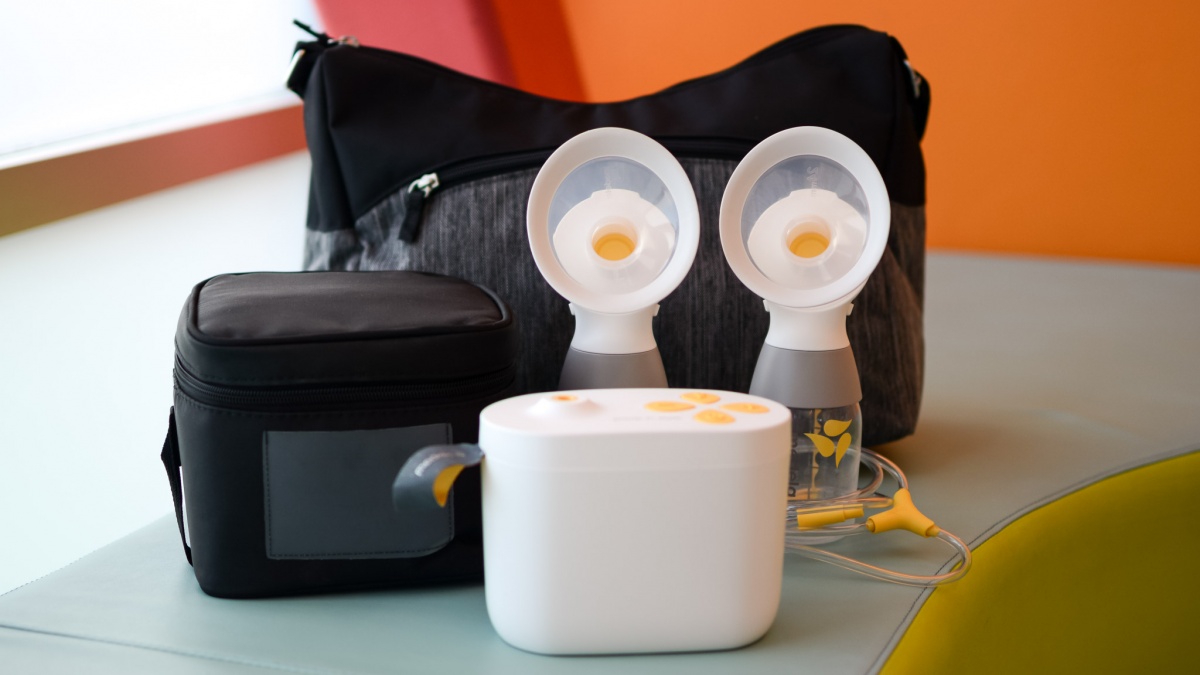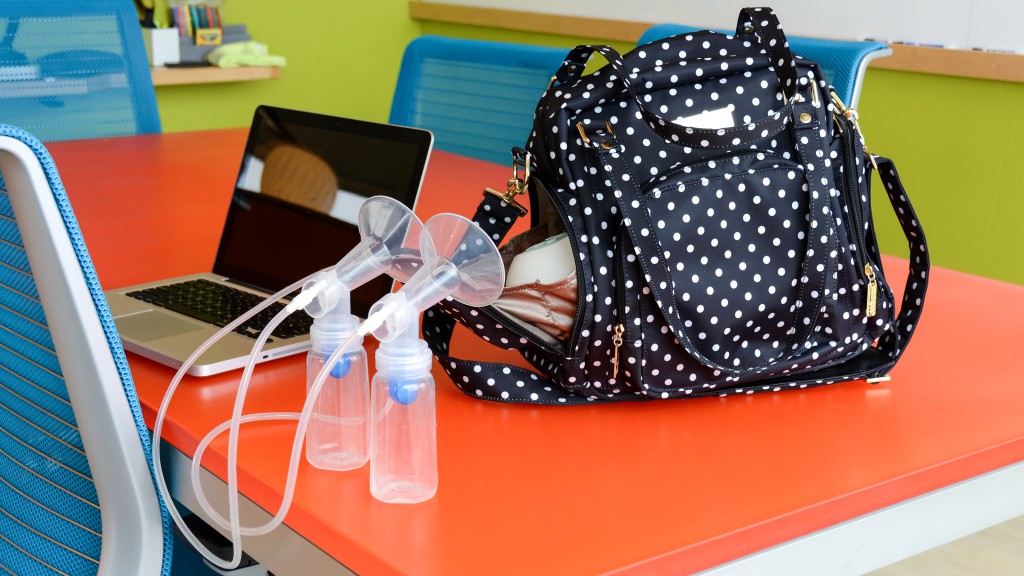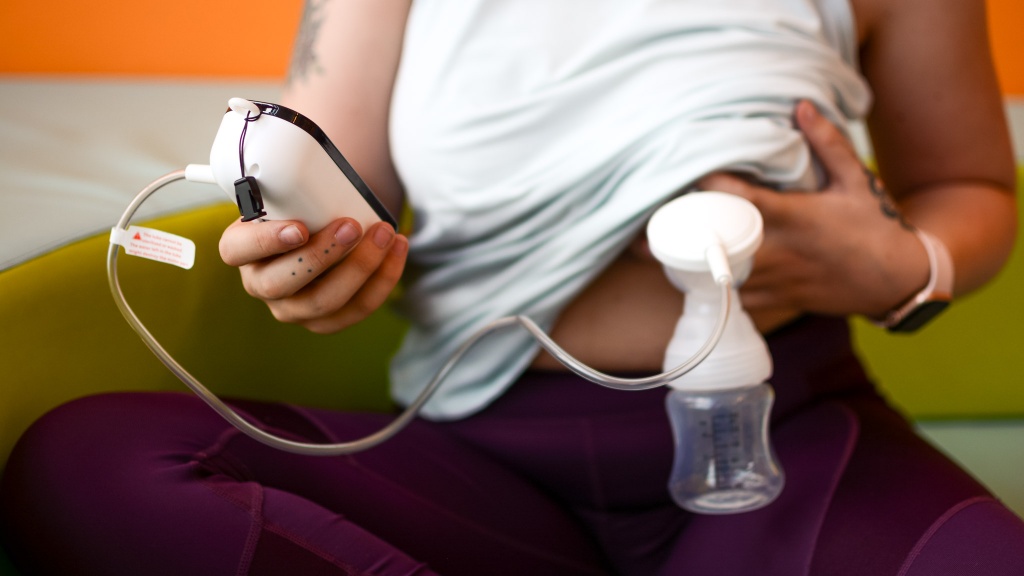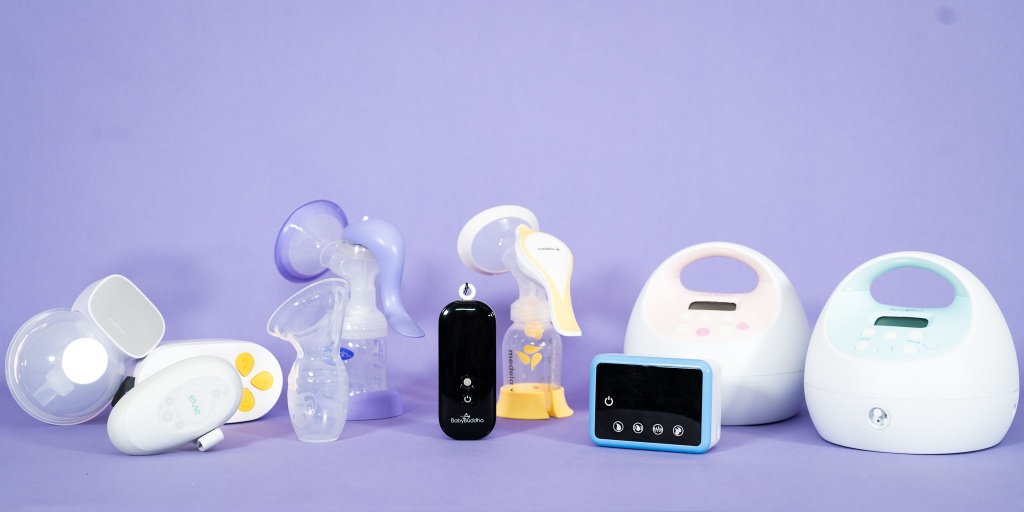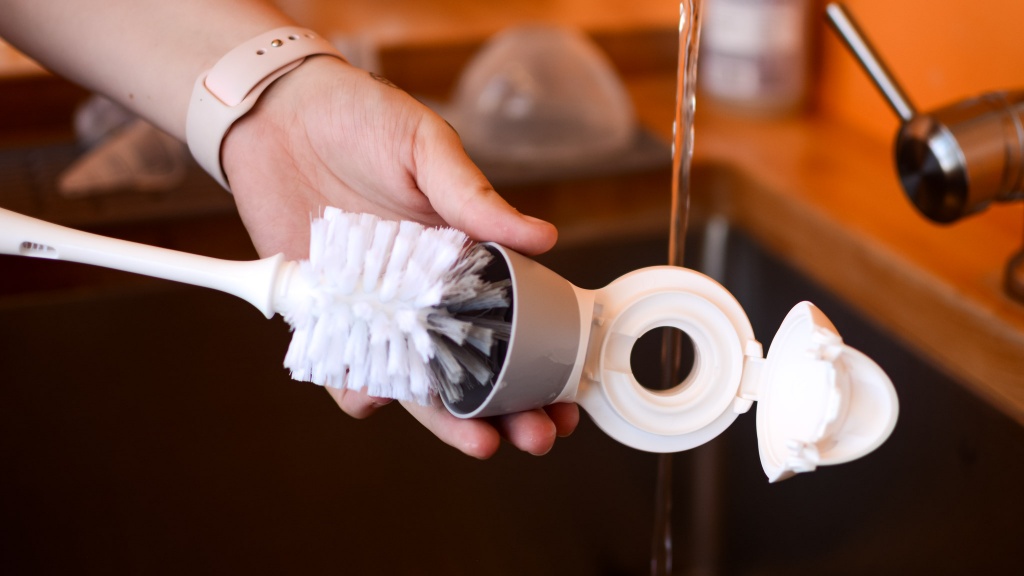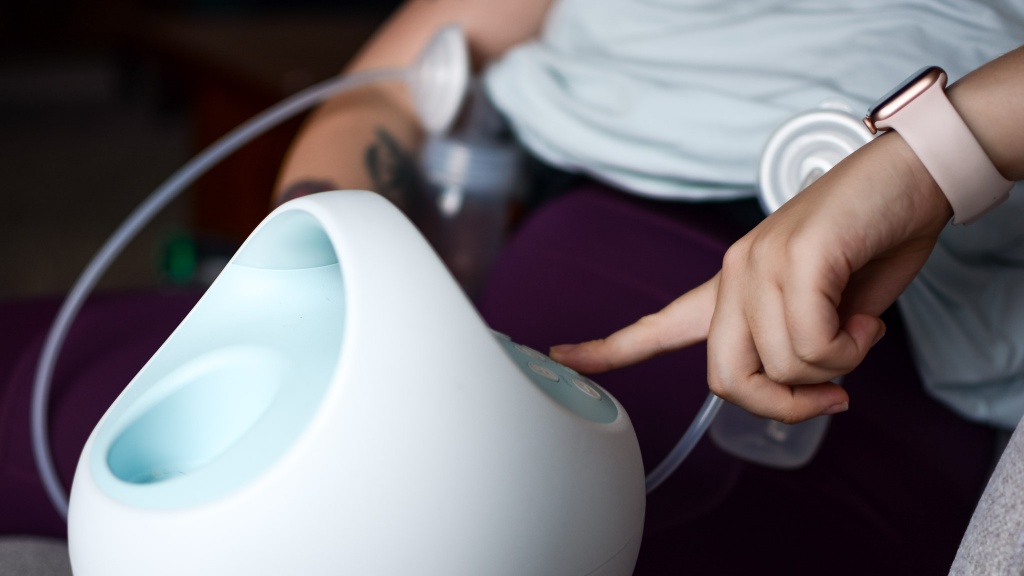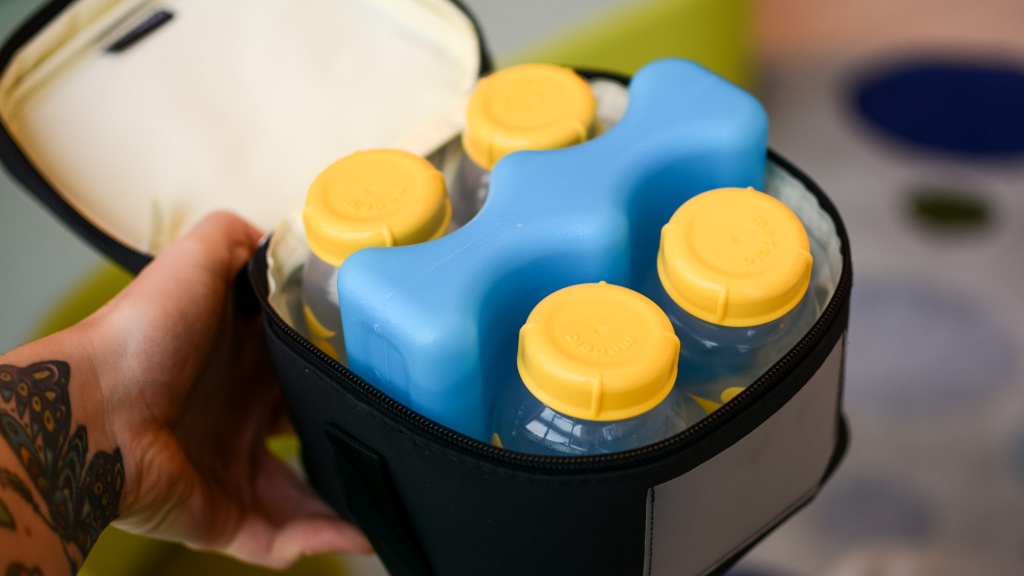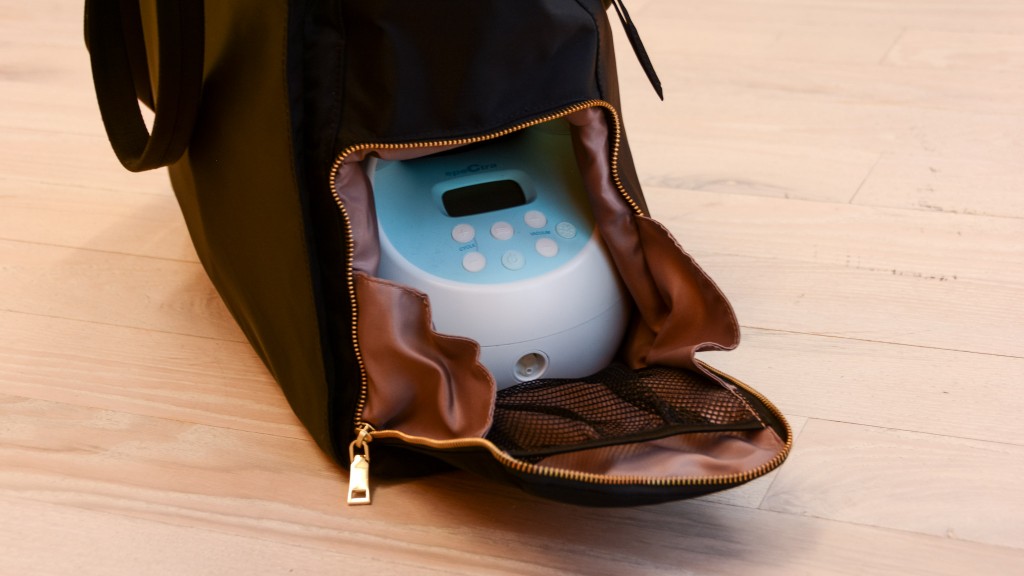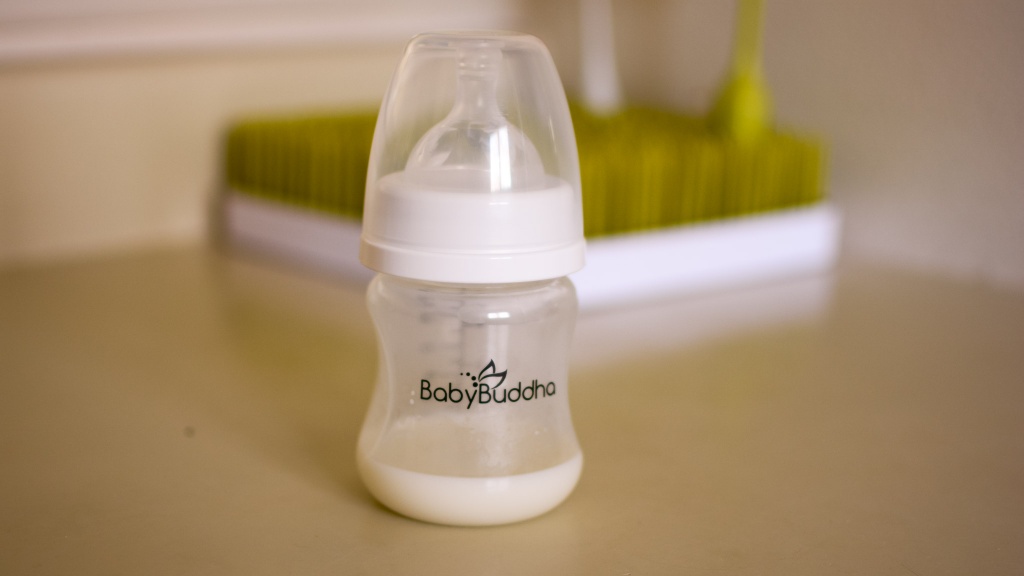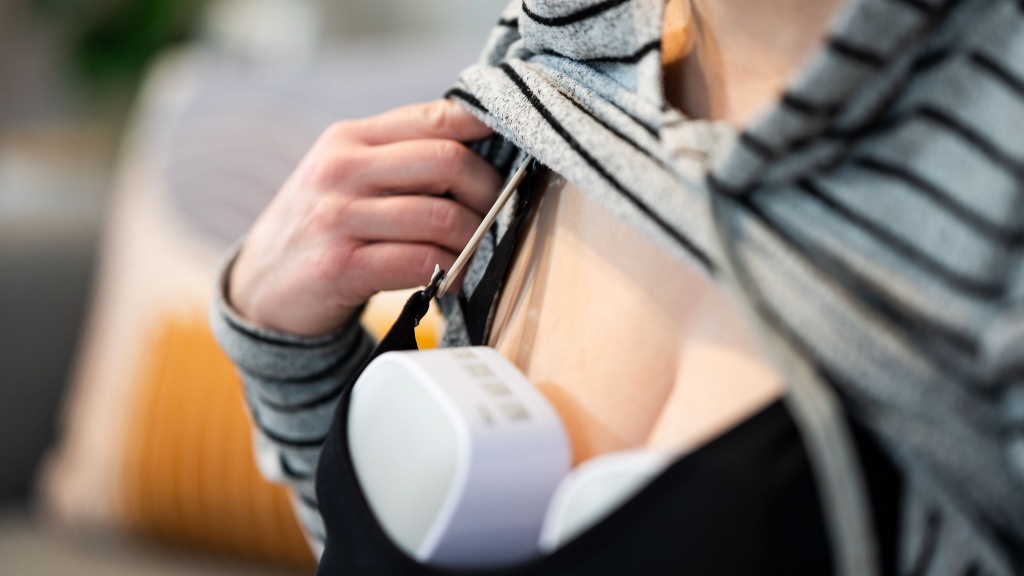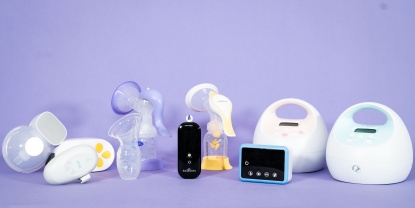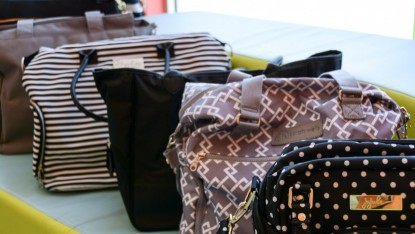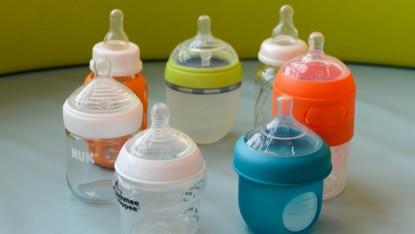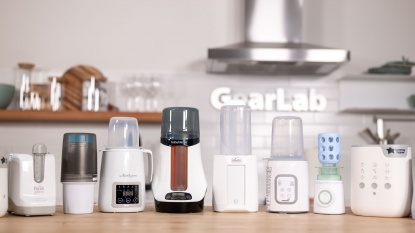A breast pump is typically a nursing mother's "close companion" during lactation. For some, a double electric breast pump can make all the difference between a stressful breastfeeding experience and a successful one or a lackluster supply and a robust one. Thus, this is one baby-related item that is worth well-researched consideration. However, breast pump specifics can be very confusing, which in turn can make selecting the right one for you a real chore. There exists a plethora of manufacturers and models in addition to technical terms such as "2-phase expression", "closed system," and "massage mode" that may propel already sensitive hormones through the roof.
This article focuses on "Everything You Need To Know about Breast Pumps." In it, we will guide you through the world of breast pumps and answer fundamental questions. Also, we highly recommend reading our Article titled Best Practices for Handling Breast Milk.
To also help you on your journey to finding the best breast pump for you, we tested several of the most popular single-use breast pumps on the market in an array of varying brands, as well as both double electric and manual, to find the best. We evaluated them comparatively, side-by-side, on the following important criteria: efficiency, comfort, ease of use, portability, and hygiene.
Will you Need a Breast Pump?
Whether you are exclusively or partially feeding your baby breast milk, it is highly likely that you will use a breast pump somewhere along the way for one purpose or another. The frequency of its use depends upon your lifestyle, milk production, and baby's appetite.
Typically, a baby's latch and sucking power during breastfeeding produce superior stimulation and volume in comparison to what a pump can accomplish during the same time frame. So, keep in mind that pumping may not produce as much milk as during a nursing session with your baby. Also, know that every mother's letdown and production can vary widely. While one may produce 5 ounces a side in a 15-minute pumping session, another mother may yield 2 ounces or less a side.
The following are common reasons why mothers choose to purchase and use a breast pump.
Engorgement
Breast pumps can feel like lifesavers when mom's milk comes in. Some women have significant engorgement to the point where the baby can't possibly relieve mom of her load. Also, it can be difficult for newborns to latch onto an engorged breast, so a pump can come in handy to help reduce volume and soften the breast before the baby.
Insufficient Supply
Pumps can also play a vital role in stimulating milk production when a mom has little supply. The physiology of breastfeeding is a demand-supply loop. By pumping for 10 to 15 minutes after the baby has already nursed, the extra stimulation will typically create a more robust milk supply over time.
Challenging Mother-Baby Nursing Dyad
Occasionally, a mom may face great difficulty getting their baby to latch on and suck properly. The reasons for this can be many, such as inverted nipples or a baby who is ill or developmentally delayed. In this circumstance, a mother needs a pump if she chooses to feed her baby expressed breast milk. To keep up with a full or part-time pumping schedule, these women often need powerful pumps to keep their milk supply going. In this situation, often, a stronger, multi-user pump can be reasonably rented for short or long-term use. Multi-user pumps are discussed below, although we did not test them in our review.
Mother Working Out of the Home
Mothers who work outside of the home are typically away from their babies for extended periods of time and rely on breast pumps to create sufficient supply and demand so that they can continue to nurse. Breast milk is certainly the most nutritious and healthful option for a baby, and it takes a great breast pump and maternal dedication to keep this train going.
For mothers anticipating a return to work, building a stockpile of frozen breast milk is important. When to begin and how much to store depends upon a mother's level of milk production as well as how many hours a week mom will be away. If mom is an overproducer, lucky her! If supply is a challenge, starting the storage process earlier may be helpful. Remember that supply is usually more robust in the morning, so occasionally, pumping after a morning feed is one approach. Or, when a baby takes only one breast, pumping the other will get you there over time. Regardless, breastfeeding while back to work requires daily dedication and preparation to keep production going. It truly is a labor of love!
Mothers In the Home
For those moms who have the job of caring for their little one(s) full-time, a breast pump can be an integral tool for reasons already discussed: engorgement, low supply, and difficulty with latch and sucking. But for the mother with her baby 24/7, this is a particularly nice reason to invest in a pump: Every new mom works hard (whether in or out of the home) and needs and deserves time away. By having a supply of expressed milk available, mom can get away for a few hours to run an errand, exercise, or have a precious date night. Dads can also get in on the feeding action and bond with their baby by giving them expressed breast milk via bottle while mom gets much-needed rest or personal time.
The Affordable Care Act and Breast Pumps
Signed into law in 2010, the Affordable Care Act (ACA), a.k.a. "Obamacare," requires commercial health insurers to include the services of "breastfeeding support, supplies, and counseling" in the comprehensive health care of women. This ACA law includes coverage of a breast pump for lactating women. The caveat here is that "coverage" may or may not pay for the entire cost of the pump, and this can vary from company to company, plan to plan, and network to network. Yikes!
Obtaining a breast pump through your health insurance can make a big difference in your pocketbook at zero to less out-of-pocket cost when compared to buying without it. However, know that it will take some legwork and make plans in advance, if possible. For example, some insurance plans will allow filing a claim no earlier than 30 to 60 days before delivery, while some will only do so once mom has delivered and up to a year past childbirth. The 30 to 60-day policy does make sense because if you end up having a baby prematurely, you may need a particular prescription for a hospital-grade breast pump, typically a rental like a Medela Symphony.
The basic steps to obtaining a breast pump through health insurance are the following:
- Prescription — A mother must get a prescription/prior authorization for a breast pump from her physician. If you plan on pumping frequently or have a history of low milk supply, make sure your doctor writes a prescription for a double-electric one. Though manual breast pumps do fill a particular niche, double electric pumps are much more efficient. Additionally, manual pumps are much less expensive than electric ones, so if insurance covers the bigger expenditure, take advantage of this opportunity.
- Submission — The prescription needs to be submitted to the mother's insurance company.
- Choose a Pump — Upon submitting the prescription, a selection of covered pumps will be provided, as well as one or more Durable Medical Equipment (DME) companies through which you can order. You may also find out further information about your coverage, such as if your insurance company will only cover a set cost or whether or not you will be responsible for a copay as part of this transaction.
- Order Pump — Contact the contracted DME company and place an order, as well as pay any remaining costs not covered by insurance.
But what happens if a mom prefers a different pump style or brand than her insurance allows? This can feel like a great roadblock, one where many may choose to quit the coverage process altogether. However, many DME companies may offer "upgrades" for a determined out-of-pocket cost. With this information, we encourage you to take this opportunity to shop around for the best price and package with reputable retailers to ensure you are getting the best deal.
Lastly, if you prefer to have an advocate do the behind-the-scenes work for you, contact your health insurer to find out which DME (Durable Medical Equipment) company they contract with as some like Aeroflow will do just this. Their services include contacting your insurance to determine its coverage policies for reimbursement, requesting a prescription from your doctor, filing a claim with your insurance, and mailing a pump directly to your door. They provide access to highly regarded breast pumps, including award-winning Spectra S1 Plus.
Types of breast pumps
There are so many brands and styles of breast pumps available that it can be tough to decide which one is right for you, other than what your friends have to say through their experiences. You may also find that your needs may be very different from theirs. Each pump has its strengths, weaknesses, and price points.
The two main categories of breast pumps are manual and electric. There are pros and cons to each, and there are reasons why one or the other may work better for you. Read on as we define each a bit more clearly.
Manual Pumps
Manual pumps are hand-operated and pump one breast at a time via a flange and manual lever, which creates suction. They are less expensive than electric pumps as well as light and small, so they easily fit into a purse or carry-on for an outing, overnight, or travel. A good manual pump should be able to express a decent amount of milk, comparable to an electric pump. However, this process is certainly more time-consuming and labor-intensive.
They are best suited for the sporadic pumper, ideally, once the milk supply is well-established. Even if a mom has an electric pump, manual pumps are a nice companion piece for the breastfeeding mom. Once a baby is down to a few feeds a day, a manual pump is a definite space-saver when out for an overnight or a short work trip.
Electric Pumps
Electric pumps are attached to a motor and run via an outlet or battery power. Most breast pumps now have the following options: an AC adapter, a car adapter, a rechargeable battery, or a battery pack. They are available in single and double versions. Single Electrics pump one breast at a time. Double Electrics can pump both breasts simultaneously, which can be a huge time saver. Typically, doubles can also be easily configured to pump just one breast if desired. All of the electric pumps we tested in our review are doubles.
If you pump more than 3x/week, a double electric pump is a very worthwhile investment. Working moms, moms with low supply needing more stimulation, or a mom who exclusively feeds her baby pumped breast milk all fit into this picture. Double electric pumps are just so much more efficient than the single versions, and if you need to pump only one breast, converting a double to a single is easy, so you have a 2-in-1 setup. Just close off one of the suction ports into which the tubing attaches.
What is a Hospital Grade Pump?
The FDA regulates breast pumps as they are considered to be medical devices. However, the term "hospital grade" is not recognized by the FDA and does not equal safety or hygiene. Our advice: do not let the term "hospital grade" influence your purchase, as manufacturers can make this marketing claim without it having a consistent definition.
Therefore, the FDA advises to pay closer attention to the terms multiple-user and single-user. Understanding the differences between each and when to buy a single-user versus when to rent or invest in a multi-user can make a big difference in the beginning and sometimes even in the long haul for some moms.
Multiple-User
Multiple-user breast pumps are typically used by hospitals and lactation consultants as well as available for home rental. If used and maintained properly, they can safely be used by multiple moms. To make this work, each user needs to have their tubing attached to the pump as well as accessories into which the milk is pumped. This is likely where the term "hospital grade" originated, referring to multiple-user capability as well as increased strength over single-user pumps. Multiple-user pumps are commonplace in NICUs where mothers with preemies who can not yet nurse can initiate lactation, pump, and save milk for their newborn once they are ready to begin oral feeding. As these mothers are lactating without the much more efficient suction power of a newborn, the increased power of multi-user pumps are essential to their long-term breastfeeding success.
Single-User
All of the pumps we tested in our review are single-user models. Single-user breast pumps tend to be much less expensive than multiple-user ones, and technically, manual pumps are single-user as well. Single-user electric pumps have either open systems or closed ones.
An open system does not have a barrier between the milk collection kit and the pump, which can potentially cause issues. Because air is drawn through the pump to create suction, without a barrier, pumped milk is technically exposed to matter in the air like dust particles, dander, pollution, bacteria, and viruses.
In addition, in an open system, contamination can stem from the opposite direction as well. If milk gets into the tubing, care needs to be taken to clean the tubing and ensure that it is completely dried out before using the pump again. If milk is inadvertently left inside the tubing, mold can grow inside and then ultimately transfer to the motor, which can not be cleaned. To painfully illustrate this point, we came across a lactation consultant's Facebook post where she took off the faceplate of several used open system pumps and comparatively photographed them to create a visual for her clients of why re-using, selling, or giving them away is out of the question. All we can say is that a picture is worth a thousand words. Thus, if you are considering purchasing a breast pump with an open system, it is particularly important to pay close attention to the manufacturer's manual, which outlines operating, cleaning, and maintenance instructions.
As of the date of this writing, the effects of these health and hygiene concerns with open system pumps have not been studied, and illness in healthy babies as a result of contaminated breast milk has not been documented in the last 35 years. One circumstance in 1979 where five preemies developed blood infections when fed the same donor breast milk highly contaminated with bacteria originating from an electric pump's tubing and safety trap. This study does not relate to a healthy newborn, however, as preemies have weakened immune systems. Also, the specifications of the pump in this mini-outbreak are unclear, but the study does indicate that the "institution of proper sterilization of the pump equipment controlled the outbreak."
On the flip side, however, open-system breast pumps like the Medela Pump in Style have been successfully used for years by mothers. And, Medela does have a clear instructional assembly video which covers how to remove the pump's faceplate to clean the diaphragm and inner area regularly as well as how to clean and air dry tubing if milk or condensation should enter it. Though regular cleaning and maintenance do help significantly, it is still perplexing to us why open-system breast pumps are still in production and circulation when the technology for single-user, closed-system pumps is now readily available.
A closed system does have a barrier between the milk collection kit and the motor. Thus, fluid is unable to enter either the suction tubing or the motor. Also, the barrier prevents air impurities from being introduced into pumped breast milk. If cared for appropriately, they are more hygienic. However, this doesn't mean they should be handed down or sold for other mom's use (more on this below).
Do Not Buy or Borrow a Used Single-User Breast Pump
We know that even single-user electric pumps can feel like an exorbitant cost. Thus, it might be tempting to borrow one from a friend or buy one used. However, it is just not worth the risk of using a hand-me-down from another mom. Simply put, don't do it.
As well, single-user breast pump manufacturers do not recommend this practice.
Allow us to delve into the details of why it is important to purchase your single-user breast pump.
Health and Hygiene
Because humans can harbor infectious diseases without even knowing it, sharing personal care products, including single-user breast pumps (manual pumps included), is not recommended, even with a good friend. Breast milk is a biological substance that can harbor HIV and CMV and be transmitted unknowingly. Also, if a mother with cracked, bleeding nipples pumps, blood comes into contact with external pump parts. Despite good washing, bacteria, and viruses can still be transmitted. Thus, it is also important to always use personal milk collection kits.
Single-user pumps are simply not meant to be passed along. Over time, an open system pump is more likely than not to have breast milk and mold breach inside the motor, which can not be cleaned or disinfected properly. On the other hand, closed-system pumps do not have these issues if a new collection kit is used. However, they are manufactured as single-use as motor life can only last so long. More about this is below.
On the other hand, multi-user pumps can be used by more than one pumping mom if they are cleaned and cared for properly. Thus, if someone chooses to make the costly investment of buying one at a high price tag, these can be passed along if they have been cared for well.
Motor Lifespan
Most single-user electric breast pumps are designed to be used for about one year with one child. The warranties among manufacturers and models may differ, so this is something to consider when purchasing. Also, manufacturers typically void a single-use breast pump's warranty if used by more than one person.
In a nutshell, if you are pumping three times a day for a year, eventually, the motor is bound to lose its strength. This also means that hand-me-downs aren't likely to have as much strength as they once did when they were new. We firmly discourage a new mom from relying on a used electric breast pump not only for the health and hygiene concerns detailed above but also because it is very likely to have lost significant power. If you are ever concerned about your pump's vim and vigor, we advise taking it to a rental location where they are likely to have a vacuum tester and can measure its suction capacity to see if appropriate levels are being reached.
What to Do with a Used Single-User Pump When Use is Over
Since it is not kosher to pass on these personal use devices, what to do with them in the end? There are two ecologically sound options. The first is to check with the pump manufacturer to see if they have a pump recycling program, such as the manufacturer Hygeia. If not, check to see if your county has an electronics recycling facility.
Important Breast Pump Features
We recommend the following key features in any pump you purchase.
Well fitting flange(s)
Flanges are the plastic pieces that you put over your breast when pumping. The pump's suction pulls the nipple into the flange. It is crucial for flanges to fit properly. Most breast pumps have flanges available in different sizes. You do not want the nipple to constantly be vigorously rubbing against the plastic as it may cause abrasions and lead to bleeding, pain, and even infection. If you have questions or concerns about fit, it is advisable to seek the help of a lactation consultant.
Dual-Phase Expression
Having a pump with 2 phases is important as each step aims to mirror what occurs during nursing with a baby. The first step is stimulation, where the baby takes short, shallow, frequent sucks to produce the letdown. The second phase is the expression where the milk comes in, and the baby's sucks become longer and deeper.
Helpful Related Accessories
For pumping moms, pumping, transport, and storage accessories are necessary for smooth pumping sessions, easy transport of the goods, and efficient, safe storage of that liquid gold. With some pumps, you will need to purchase items separately. However, very few contenders include a tote bag, bottles, lids, breast milk storage bags, and a small insulated cooler with ice pack for storing breast milk until it finds a refrigerator or freezer.
Breast Pump Bag
For moms who need to pump outside of the home, having a good breast pump bag that both fits the essentials plus extras such as water, snacks, keys, wallet, and cell phone can be a huge perk. And one that looks like a purse instead of the iconic pump totes is a real treat. Not all the tote bags included with the pumps were big enough or stylish enough for these tasks.
Take a look at the top-ranked breast pump bags to find other available options than the one that may or may not be included with the purchase of your breast pump. You too can be Wonder Woman carrying everything you need while you are away from baby plus more in one bag.
Breast Milk Storage System
Whether you are pumping on the go or just at home, you'll need to consider purchasing a breast milk storage system such as bags or glass containers in which you can freeze your milk. For more on this topic, we invite you to read our article Best Practices for Handling Breast Milk.
Insulated Cooler & Freezing Pack: Size and Quality Matters
Insulated cooler bags are typically not a one-size-fits-all solution either. They come in varying shapes and sizes, holding 3-8 bottles per bag. Total milk production while the mom is away from her baby will need to be considered to find the right capacity. Also, you need to think about how long the cooler can maintain the breast milk at a healthy temperature. If you have a refrigerator, the pumped milk can be placed in while you are at work, leaving the freezer packs to do their duty to and from work; you are golden! Otherwise, the longer you are gone and the more milk you have, the bigger the insulated bag and more robust cooling packs need to be.
Bottles, Lids, and Milk Storage Bags
Before going back to work or for an outing where you will need to pump, it is a good idea to have down your preferred process. Basically, the longer you are gone, the more accessories you will need. Transferring milk into storage bags like Lansinoh Breast Milk Storage Bags while you're away can save space in the insulated cooler, but you need to make sure all is well-sealed and packaged into the cooler so as to prevent punctures in the bag.
Power Supply
If you depend upon an electric pump while out of the house, having the right accessories is important. Most electric pumps come equipped with an AC adapter to plug into an outlet. If you are pumping in the car or on the plane, a car adapter or battery pack can certainly come in handy. If you need battery power for a long time without an outlet, a rechargeable battery pack is necessary; only some pumps offer this feature, so make sure to check.
Conclusion
We invite you to look at our favorite breast pump review, where we have a list of all of the options we tested with included or available accessories. We feel confident there is a top-ranked option in our review for all goals and budgets; whether you want to capture passive letdown or go bike riding while pumping, we've got you covered.

